|
CALAIS. MANUSCRIT.
[Plan de Calais].
[circa 1760]. En deux feuilles jointes de 307 x 518 mm.
Référence libraire : LBW-466

|
|
|
CALCOEN, ROGER [ed.].
Inventaire des manuscrits scientifiques de la Bibliothèque Royale de Belgique. T. I-II-III.
Bruxelles, Bibliothèque Royale, 1965. 3 volumes in-4, 119-XXIV + 95-XXIV + 129-XVI pp., plates (black & white).
Référence libraire : 80492
|
|
|
CALAIS. MANUSCRIT.
Plan de Calais et du fort de Nieulai.
[circa 1700]. En deux feuilles jointes de 720 x 970 mm.
Référence libraire : LBW-4147
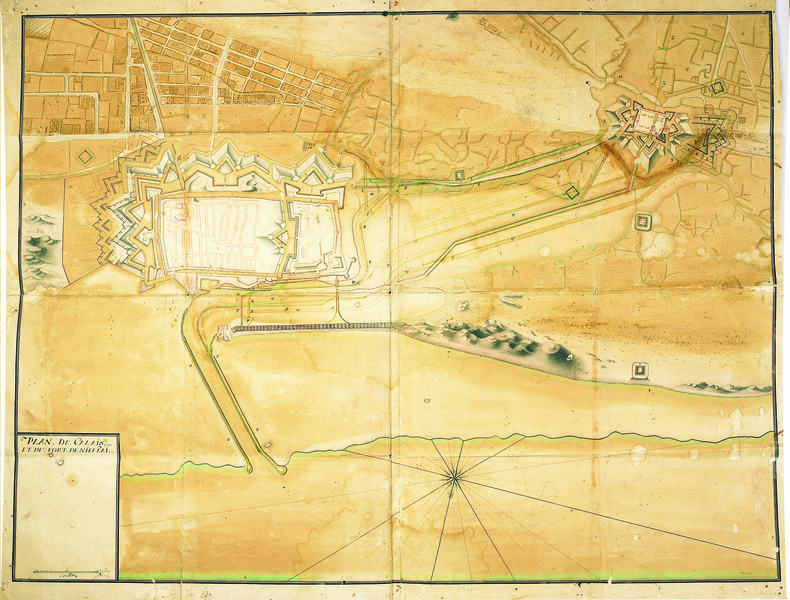
|
|
|
CALCOEN, ROGER [ed.].
Inventaire des manuscrits scientifiques de la Bibliothèque Royale de Belgique. T. I-II-III.
3 volumes in-4, 119-XXIV + 95-XXIV + 129-XVI pp., plates (black & white). Très bel ensemble - VG+++ [P-53]
|
|
|
Calder, Ritchie
Men Against the Desert
186 pages, illustrated, maps on the endpapers, index. eng
|
|
|
Cali, Francois and Heimann, Ernest & Adair (Translators)
Provence : Land of Enchantment
No marks or inscriptions. A lovely clean crisp very tight copy with bright unmarked cream cloth boards and no bumping to corners. Clipped dust jacket not marked or torn or creased. 338pp. With 215 pages of beautiful photographs of the Provence region of France in black & white and four colour plates. Two fold-outs in perfect condition. Ninety introductory pages on the region and 32 pages of notes on the photographs.

|
|
|
CALIFORNIA MAPS
Scientific American. The Monthly Journal of Practical Information.
New York.: Scientific American Publishing Company. 06- 1924. Complete June 1924 issue of magazine 369-440pp 14 x 11 inches color pictorial paper covers as issued. Very good clean condition. Fascinating color cover illustration of "Model Makers at Work on a Huge Relief Map" of California. The related article by H.H. Dunn "The Largest Map in the World. A Monster Model in Relief of the Entire State of California" includes 3 black and white illustrations of the process of making the map. Other articles are on the Sydney Harbor Bridge a full page drawing "The Locomotive of the Future" etc. . Scientific American Publishing Company. unknown
Référence libraire : 42244

|
|
|
Calvo, Alfredo Castillero
The Silver Routes: The First Globalization
208 pages. Bibliography and glossary. Sumptuously and profusely illustrated with colour photos and reproductions of archival maps and illustrations. Text in English. "Documents the tremendous impact the arrival of New World gold and silver had upon Europe and the world economy. Describes the routes followed by the galleons on their return to Spain, loaded with precious metals, and the techniques used for their extraction. Discusses how mining towns were established, and famous fairs held in Portobelo and Jalapa. From this we learn how several mints were founded." - from Prologue. Clean, bright, tight and unmarked with negligible wear. Dust jacket now preserved in archival-grade Brodart. A suberb copy of this beautifully-presented work. Gift quality. Book

|
|
|
CAMOCIO (Giovanni Francesco).
[ALBANIE/VLORA] Valona.
[Venise, 1572]. 156 x 212 mm.
Référence libraire : LBW-1464
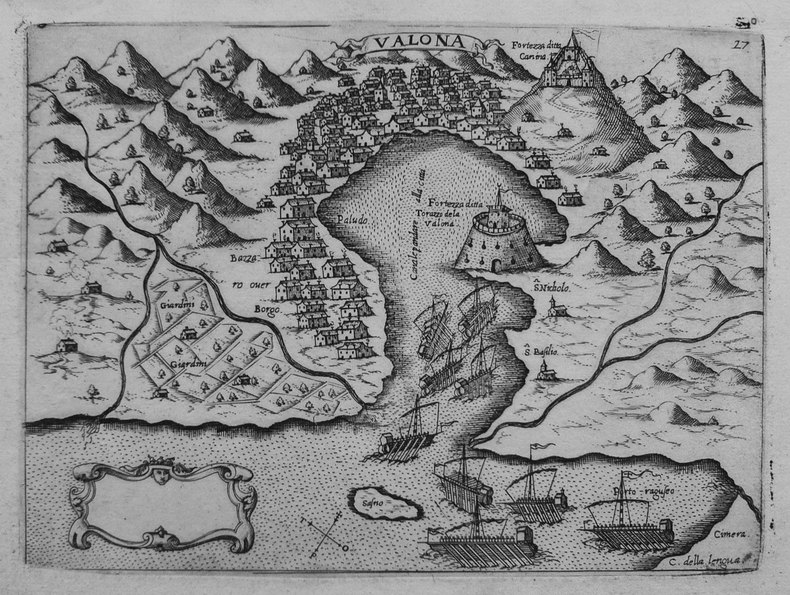
|
|
|
CAMOCIO (Giovanni Francesco).
[ALBANIE/SHKODER] Scutari.
[Venise, 1572]. 158 x 219 mm.
Référence libraire : LBW-1465

|
|
|
CAMOCIO (Giovanni Francesco).
[ALBANIE] Durazzo antiquamente detta Epidamna città nella provincia di Albania.
[Venise, 1572]. 147 x 181 mm.
Référence libraire : LBW-1454
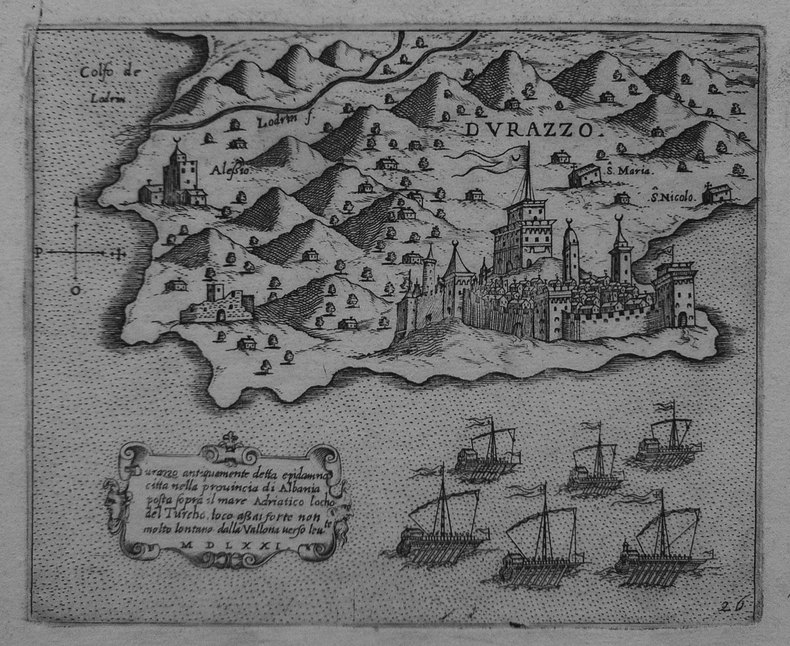
|
|
|
CAMOCIO (Giovanni Francesco).
[CHIOS] Scio Chio.
[Venise, 1572]. 216 x 165 mm.
Référence libraire : LBW-1438

|
|
|
CAMOCIO (Giovanni Francesco).
[CHIOS] Città di Scio.
[Venise, 1572]. 173 x 222 mm.
Référence libraire : LBW-1437
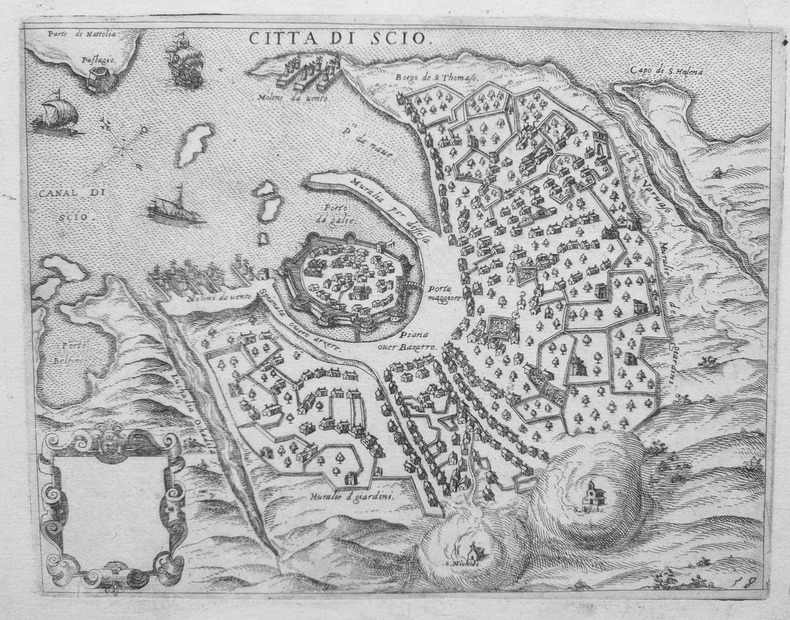
|
|
|
CAMOCIO (Giovanni Francesco).
[CORFOU] Corfu insula.
[Venise, 1572]. 192 x 152 mm.
Référence libraire : LBW-1387
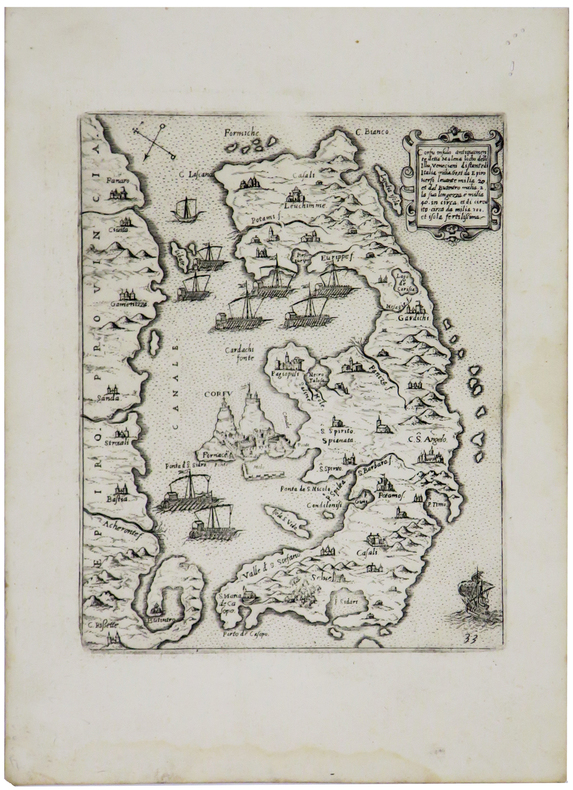
|
|
|
CAMOCIO (Giovanni Francesco).
[CROATIE] Liesena insula nella Dalmatia.
[Venise, 1572]. 162 x 210 mm.
Référence libraire : LBW-1456
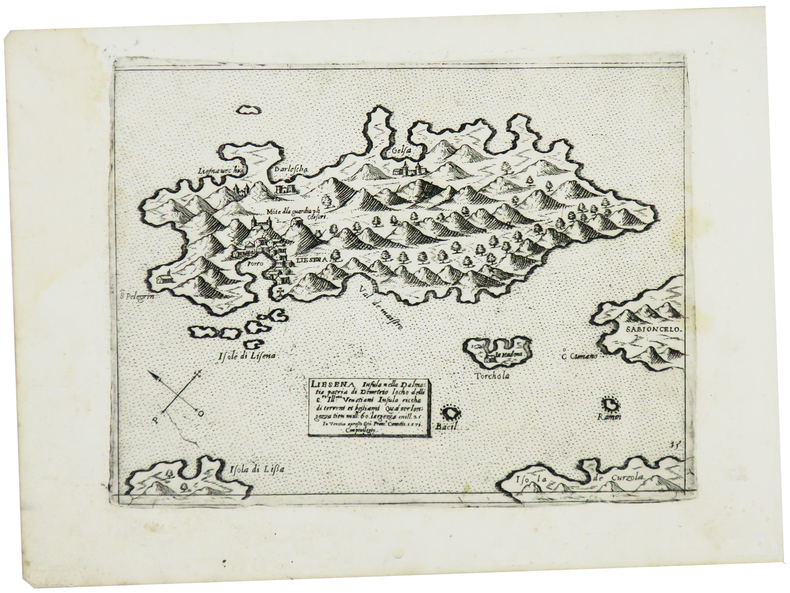
|
|
|
CAMOCIO (Giovanni Francesco).
[CROATIE/SIBENIK] Sebenico et contado città nella Dalmatia.
[Venise, 1572]. 173 x 223 mm.
Référence libraire : LBW-1458

|
|
|
CAMOCIO (Giovanni Francesco).
[CROATIE/ISTRIE] Istria sotto il dominio veneto.
[Venise, 1572]. 152 x 208 mm.
Référence libraire : LBW-1466
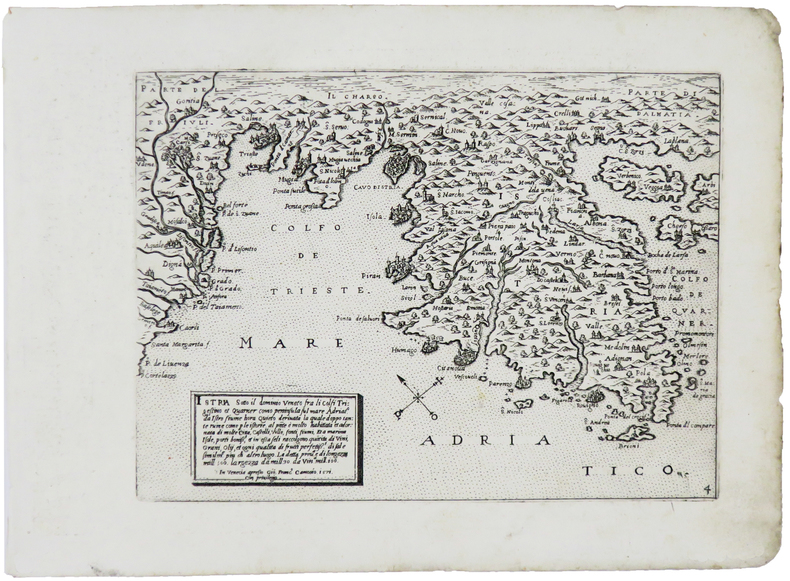
|
|
|
CAMOCIO (Giovanni Francesco).
[CROATIE] Fortezza di Macarsca.
[Venise, 1572]. 176 x 232 mm.
Référence libraire : LBW-1379
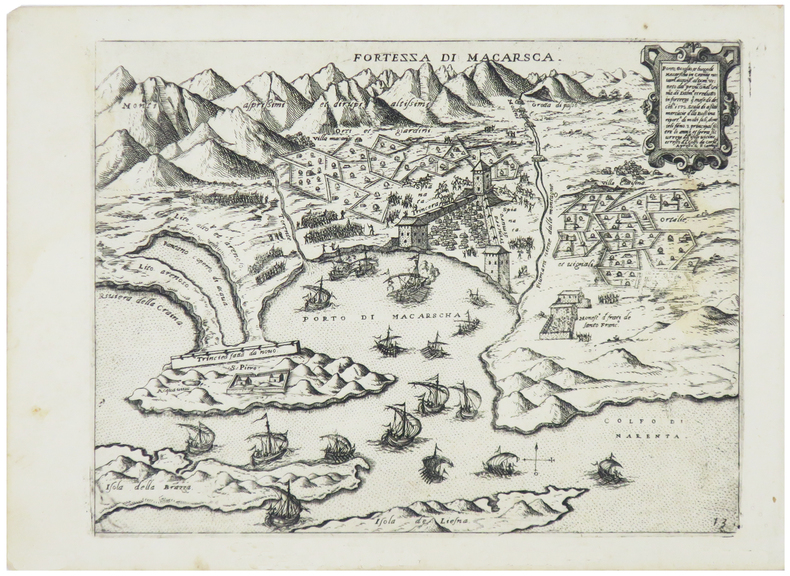
|
|
|
CAMOCIO (Giovanni Francesco).
[CRETE] Candia vel Creta insula.
[Venise, 1572]. 196 x 159 mm.
Référence libraire : LBW-1371

|
|
|
CAMOCIO (Giovanni Francesco).
[CROATIE/SPLIT] Spallato città nobile et antiqua patria di Dioclesiano.
[Venise, 1572]. 151 x 201 mm.
Référence libraire : LBW-1457
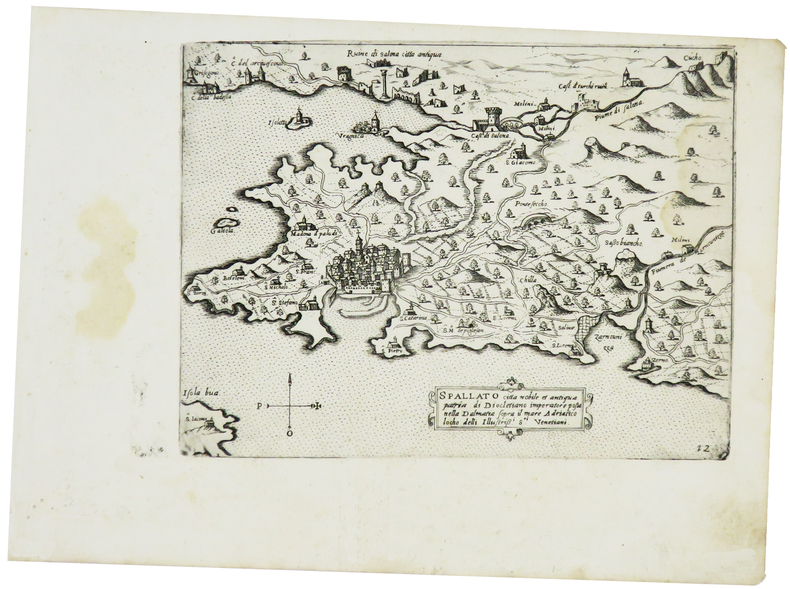
|
|
|
CAMOCIO (Giovanni Francesco).
[EUBEE] Negroponte insula.
[Venise, 1572]. 209 x 158 mm.
Référence libraire : LBW-1447
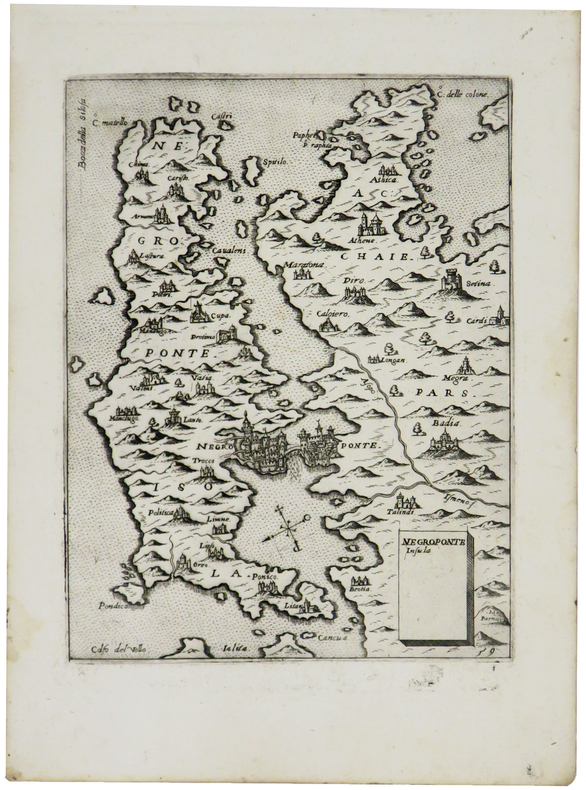
|
|
|
CAMOCIO (Giovanni Francesco).
[GOLFE DE PATRA] [Golfo di Lepanto].
[Venise, 1572]. 153 x 206 mm.
Référence libraire : LBW-1441
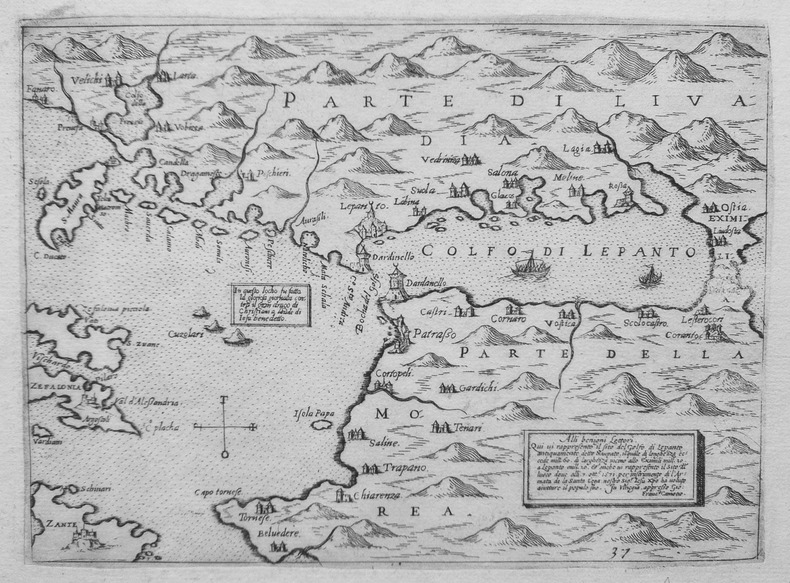
|
|
|
CAMOCIO (Giovanni Francesco).
[KYTHIRA] Cerigo insula.
[Venise, 1572]. 157 x 210 mm.
Référence libraire : LBW-1442
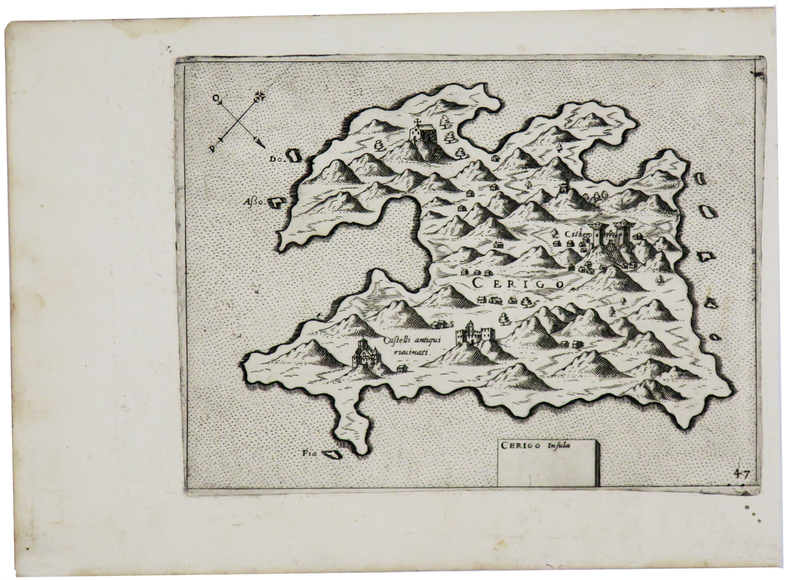
|
|
|
CAMOCIO (Giovanni Francesco).
[LESBOS] Metelin Mitilene.
[Venise, 1572]. 223 x 166 mm.
Référence libraire : LBW-1445
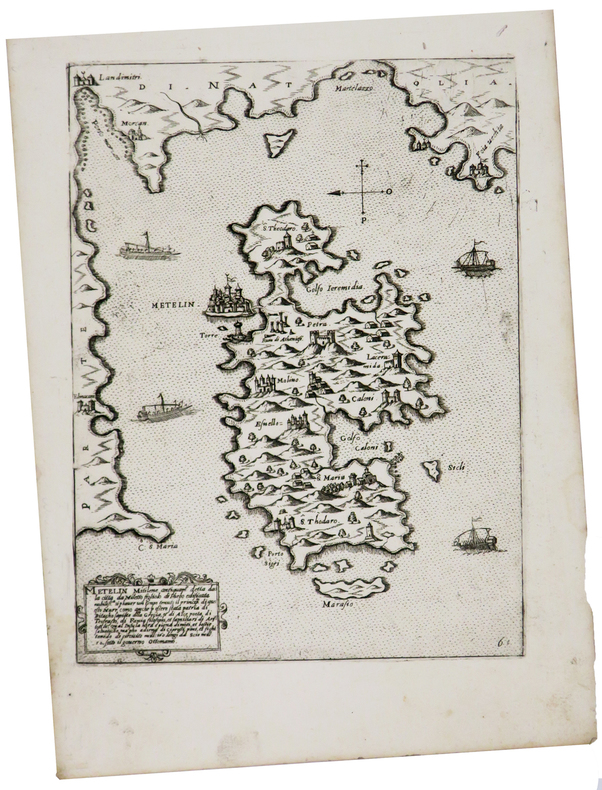
|
|
|
CAMOCIO (Giovanni Francesco).
[LEUCADE] Forteza de S. Maura.
[Venise, 1572]. 235 x 172 mm.
Référence libraire : LBW-1451

|
|
|
CAMOCIO (Giovanni Francesco).
[LEUCADE] Sancta Maura.
[Venise, 1572]. 172 x 233 mm.
Référence libraire : LBW-1450
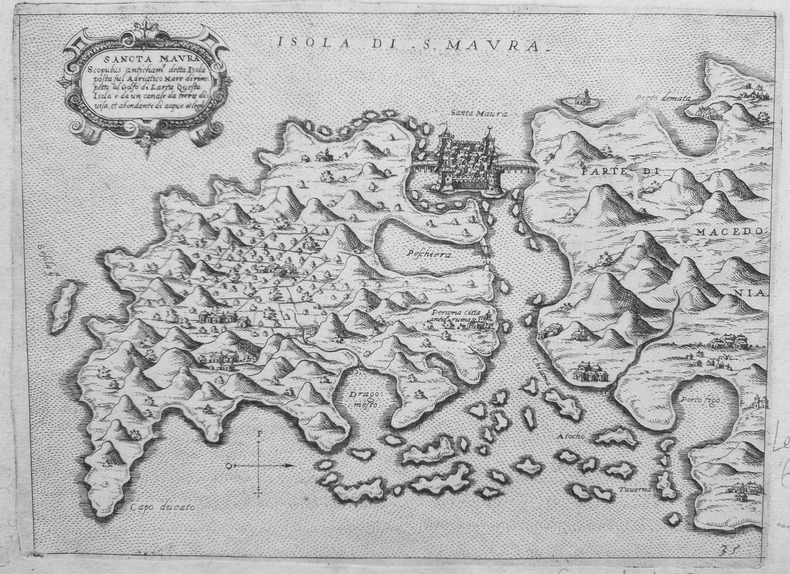
|
|
|
CAMOCIO (Giovanni Francesco).
[LEMNOS] Stalimene.
[Venise, 1572]. 216 x 165 mm.
Référence libraire : LBW-1439
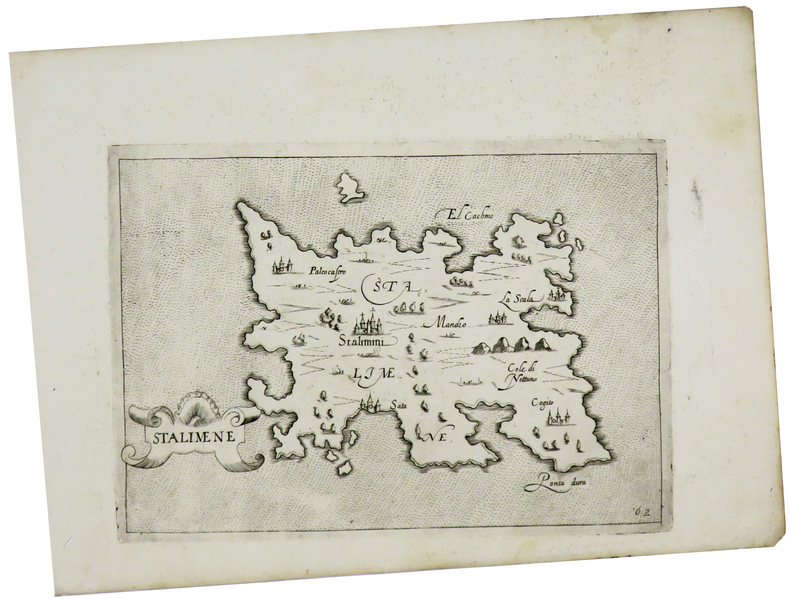
|
|
|
CAMOCIO (Giovanni Francesco).
[MARGARITI] Margaritin.
[Venise, 1572]. 168 x 222 mm.
Référence libraire : LBW-1446
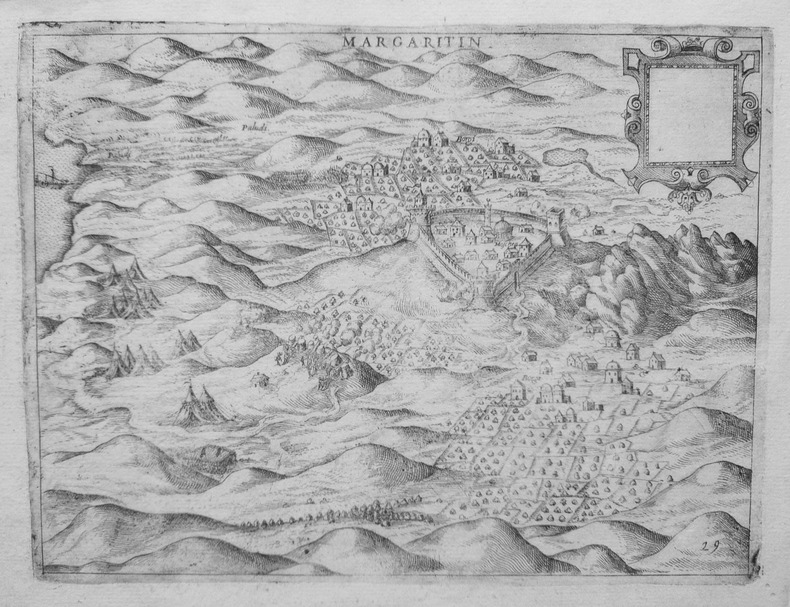
|
|
|
CAMOCIO (Giovanni Francesco).
[METHONI/PELOPONNESE] Il vero sitto overo contado de Modon.
[Venise, 1572]. 164 x 233 mm.
Référence libraire : LBW-1453
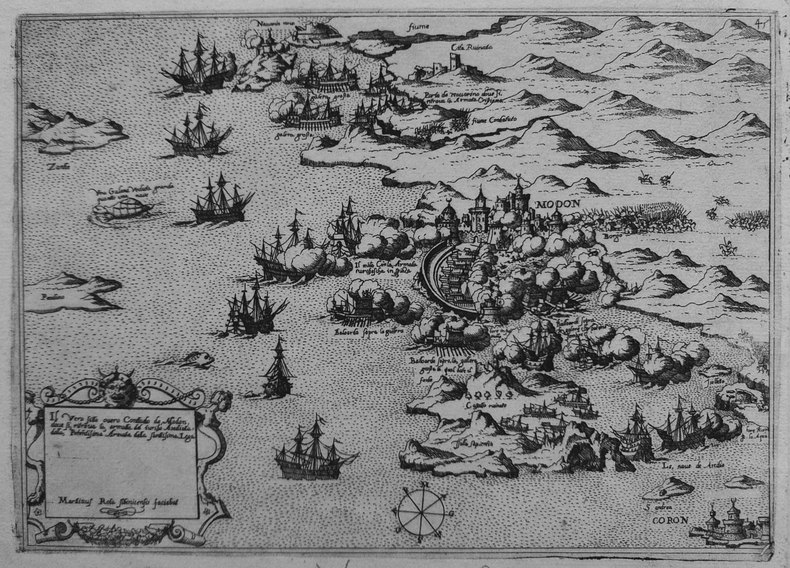
|
|
|
CAMOCIO (Giovanni Francesco).
[MILOS] Milo insula posta nel mare dello arcipelago.
[Venise, 1572]. 200 x 151 mm.
Référence libraire : LBW-1444

|
|
|
CAMOCIO (Giovanni Francesco).
[MONTENEGRO/ULCINJ] Dulcigno già detto Ulcinio città antiqua posta nel confine della Dalmatia.
[Venise, 1572]. 150 x 204 mm.
Référence libraire : LBW-1462
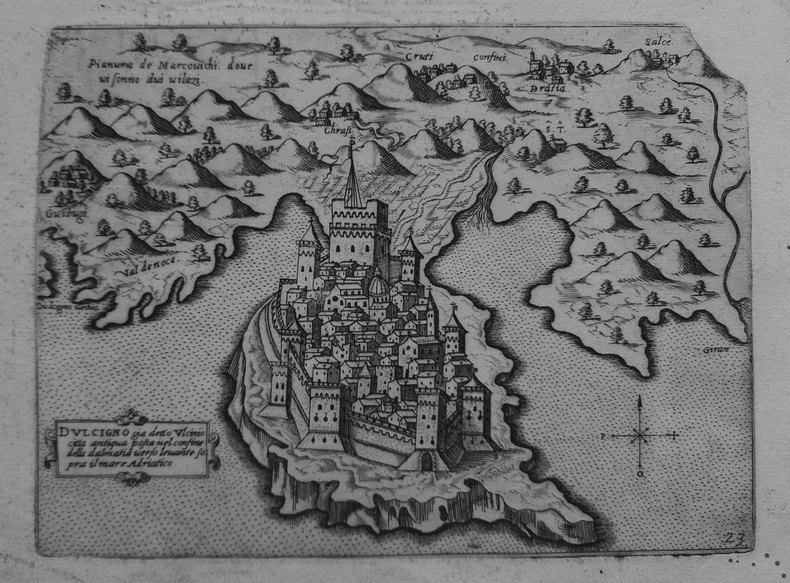
|
|
|
CAMOCIO (Giovanni Francesco).
[MONTENEGRO/HERCEG NOVI] Castel Novo.
[Venise, 1572]. 174 x 232 mm.
Référence libraire : LBW-1461

|
|
|
CAMOCIO (Giovanni Francesco).
[MONTENEGRO/BAR] Antivari cita in confine della Dalmatia et Albania.
[Venise, 1572]. 156 x 214 mm.
Référence libraire : LBW-1463
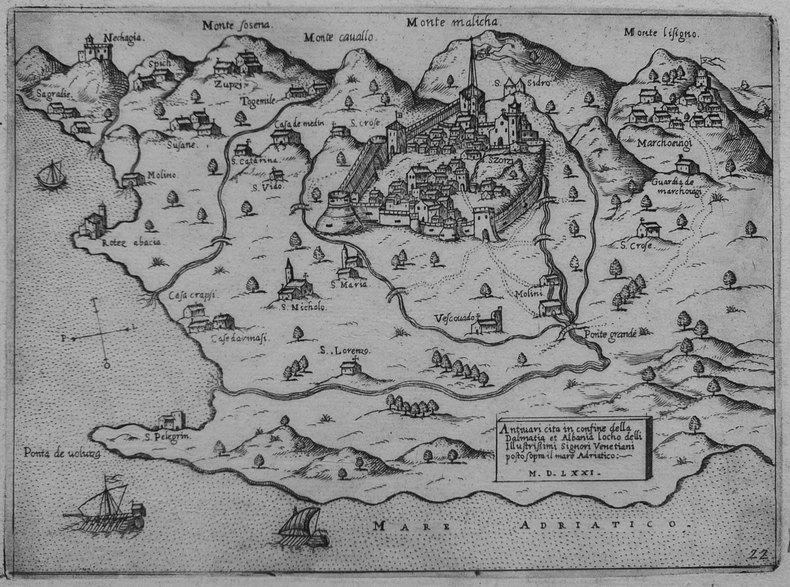
|
|
|
CAMOCIO (Giovanni Francesco).
[NAXOS] Nicsia Nacso.
[Venise, 1572]. 201 x 150 mm.
Référence libraire : LBW-1388
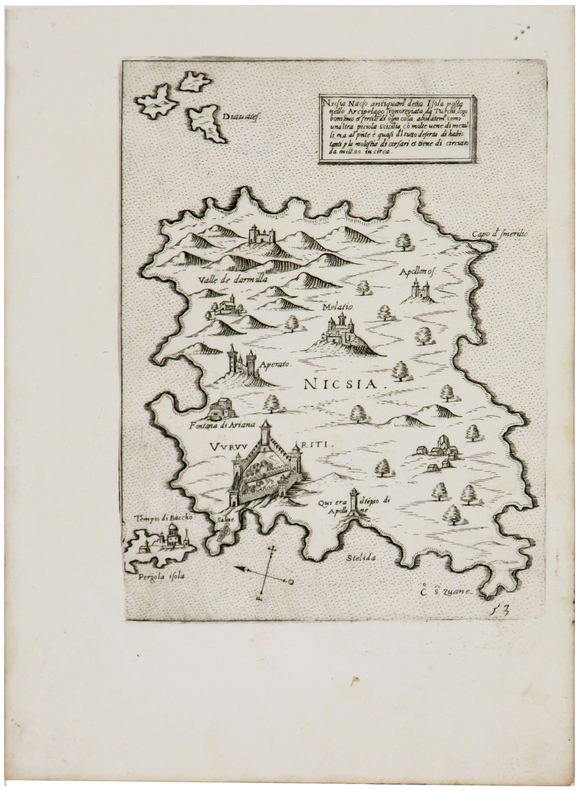
|
|
|
CAMOCIO (Giovanni Francesco).
[PATMOS] Palmosa Patmo.
[Venise, 1572]. 205 x 156 mm.
Référence libraire : LBW-1434

|
|
|
CAMOCIO (Giovanni Francesco).
[PREVEZA] Golfo della Prevesa.
[Venise, 1572]. 157 x 205 mm.
Référence libraire : LBW-1452

|
|
|
CAMOCIO (Giovanni Francesco).
[RHODES] Rhodi insula et città memorabile.
[Venise, 1572]. 202 x 158 mm.
Référence libraire : LBW-1440
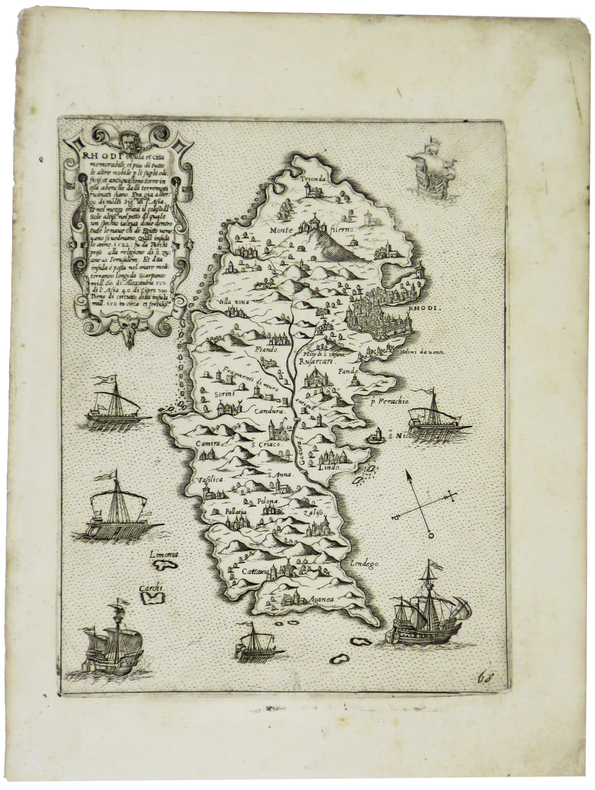
|
|
|
CAMOCIO (Giovanni Francesco).
[SAMOS] Samo nello arcipelago.
[Venise, 1572]. 205 x 154 mm.
Référence libraire : LBW-1435

|
|
|
CAMOCIO (Giovanni Francesco).
[SANTORIN] S. Erini et Thiresia insule poste nell'arcipelago.
[Venise, 1572]. 164 x 226 mm.
Référence libraire : LBW-1443
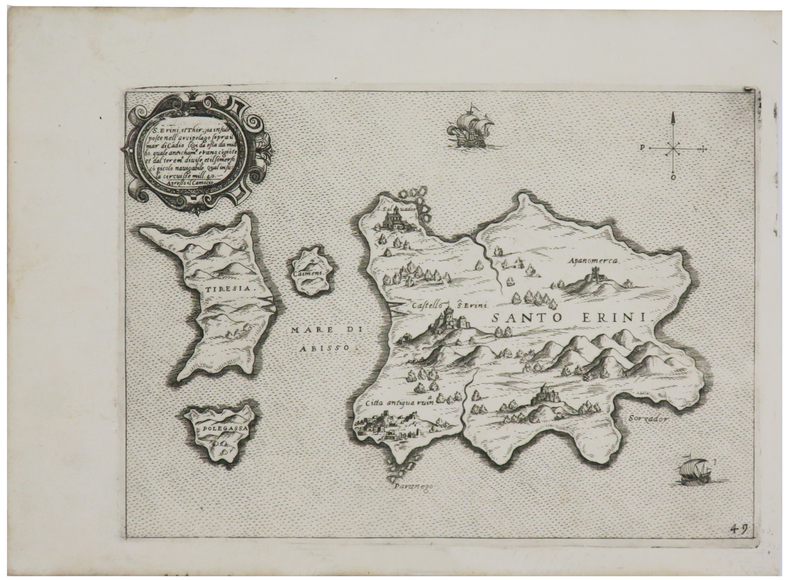
|
|
|
CAMOCIO (Giovanni Francesco).
[TINOS] Tine insula et città antiqua posta nello arcipelago.
[Venise, 1572]. 163 x 204 mm.
Référence libraire : LBW-1436
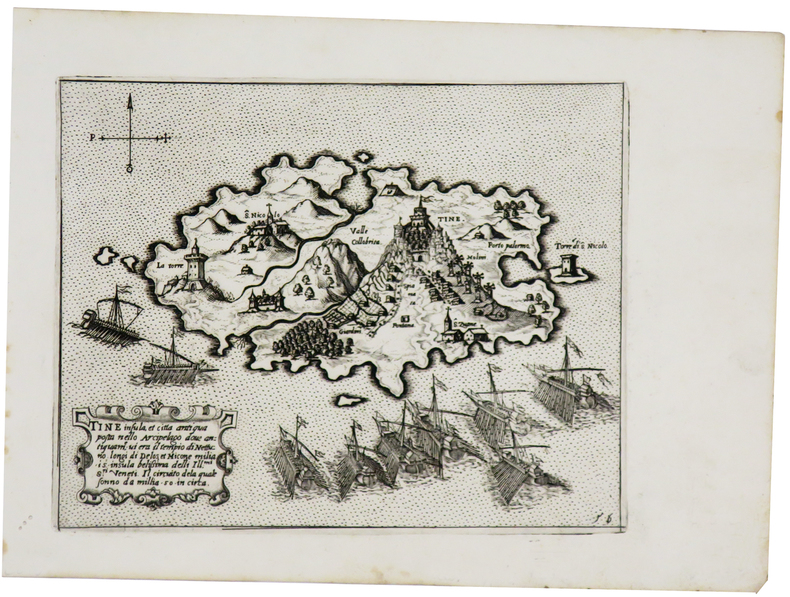
|
|
|
CAMOCIO (Giovanni Francesco).
[ZAKYNTHOS] Zante insula posta nel mare Mediteraneo.
[Venise, 1572]. 177 x 209 mm.
Référence libraire : LBW-1449
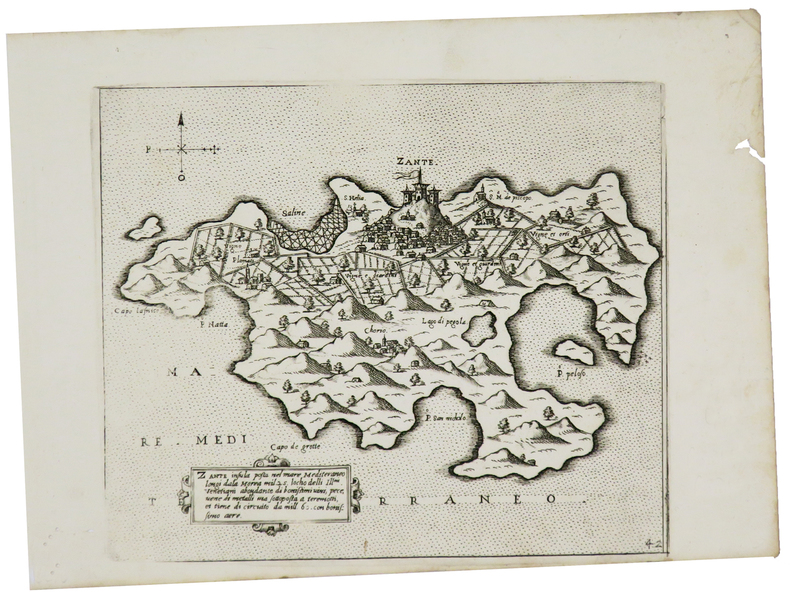
|
|
|
CAMPBELL
CARTE GUIDE CAMPBELL N°13 PYRENEES BAYONNE
EDITIONS BLONDEL LA ROUGERIE - Carte dépliante en couleurs en 32 volets en couleurs au 1/320.000e. In-Plano toilé; etiquette,format IN12 repliée,la France en 15 regions; 86x68 cm.
Référence libraire : 20176
|
|
|
CAMOIN - TAROT
Donation CAMOIN et cie. Exposition du Tarot de Marseille. Exposition à Marseille au Musée du Vieux-Marseille, Octobre 1974 - Mars 1975.
Imprimerie Municipale - Musée Du Vieux-Marseille Marseille 1974 In-8 long ( 220 X 125 mm ), broché sous couverture illustrée. Catalogue de l'exposition qui s'est tenue au Musée du Vieux-Marseille, Octobre 1974 - Mars 1975. Illustrations en couleurs et en noir hors-texte. Très bel exemplaire.
Référence libraire : 601065
|
|
|
CAMP DE VALDAHON.-
Les Amusements des Militaires. La Danse de l'Ours.-
Le Valdahon. Edition Photographie Nouvelle. Sans date. Carte postale en noir et blanc, très animée, nombreux militaires et nombreux enfants au premier plan. Courrier et adresse au verso, sans timbre. Bon exemplaire. Photo sur demande.
Référence libraire : ORD-17423
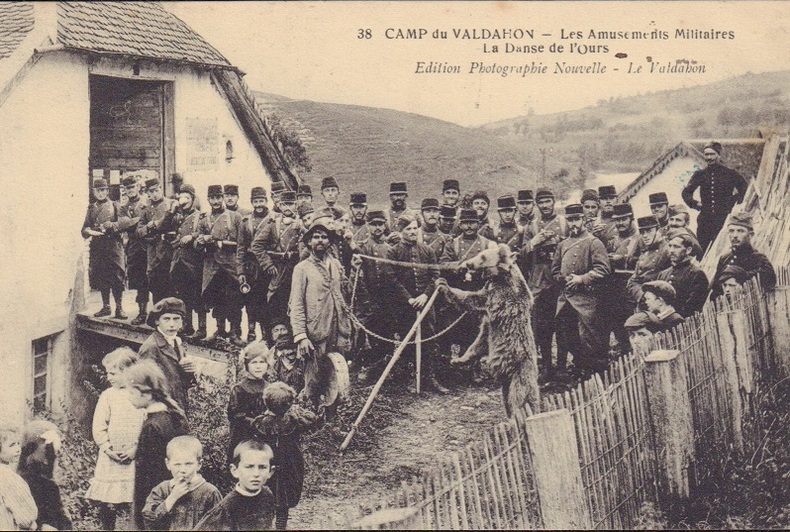
|
|
|
Camesina, Albert.
Plan der Befestigungen und der Höhenverhältnisse der Häuser der Stadt Wien im Jahre 1566. Herausgegeben von dem Gemeinderathe der Reichshaupt- und Residenzstadt Wien. Wien, Alfred Hölder, 1880.
Mehrfach gefalteter Plan (84:102 cm). In Halbleinenmappe mit aufgezogenem bedrucktem Originalumschlag. Qu.-Folio. Für die Topographie Wiens im 16. Jhdt. bedeutender Plan. Tadellos erhalten. Gugitz 12.564.

|
|
|
CAMOCIO Giovanni Francesco (Attivo a Venezia tra 1558 - 1575)
Il vero ordine et modo tenuto dalle armate Cristiana e Turchesca...
Nel cartiglio in basso a sinistra si legge: Il vero ordine et modo, tenuto dalle armate Cristiana et Turchesca, nella battaglia, che fu ali .7. Ottobrio .1571. il giorno di S.a Giustina, comincio lasalto a 4 hore et meza di giorno, et durò circa 4 hore; tra curzolari et cavo papa, loco poco discosto dal Golfo d[e] Lepa[n]to p[er] li havisi hauti dal Clar.mo Iustiniano venuto a Venetia, co[n] le nove de la vitoria, seguita in favor d[e] la Cristiana armata, con presa et rotta di galere 213, tra le quali erano 40 fano et 39 ne so[n] presi morti de nimici 40m in circa scihavi cristiani ricuperati, 18m in circa, turchi fatti schiavi 4m in circa. In basso, al centro della tavola, che è priva di orientazione, una bella vignetta allegorica mostra un drago con la mezzaluna sul capo - simbolo del nemico turco - assalito e sottomesso dal leone rampante di Venezia e dall’aquila asburgica. Opera molto rara, priva di indicazioni editoriali. Attribuita a Giovanni Francesco Camocio (cfr. Bifolco-Ronca, Cartografia e topografia italiana del XVI secolo, p. 1605). La presente tavola raffigura la Battaglia di Lepanto, la celebre battaglia navale del 1571 che si svolse di fronte a Lepanto, all’estremità occidentale del Golfo di Patrasso. Casus belli era stato l’attacco turco alla città di Famagosta, nel possedimento veneziano di Cipro, avvenuto l’anno precedente, il 22 agosto 1570. La vittoria cristiana contro le armate turche del 1571 ne fermò l’avanzata in Europa e verso Roma, segnando anche l’inizio della decadenza marittima ottomana. Vide coinvolte la flotta turca comandata da Mehmet Ali Pascià (un apostata di origini calabresi, convertitosi all’Islam) e quella della Lega Santa, creata il 20 maggio del 1571 da Papa Pio V: Stato Pontificio, Repubblica di Venezia, Repubblica di Genova, Ducato di Savoia, Granducato di Toscana, Ducato di Urbino, Ducato di Parma, Repubblica di Lucca, Ducato di Ferrara, Ducato di Mantova, Impero spagnolo (con il Regno di Napoli e di Sicilia) e Ordine di Malta, al comando del ventiseienne Don Giovanni d’Austria, figlio naturale di Carlo V e fratellastro del regnante Filippo II.La flotta cristiana era formata da circa 200 galere, di cui oltre la metà erano veneziane al comando del Capitano da Màr Sebastiano Venier, la flotta turca ne aveva circa 250. La prima linea della flotta cristiana era formata da galeazze mercantili veneziane (nell’incisione indicate come “galeaze” sul lato destro, sopra al cartiglio), trasformate per l’occasione, e in soli 100 giorni, in navi da guerra, impiegate per la prima volta proprio in questa battaglia, armate di cannoni non solo a prua, ma anche sui fianchi e a poppa, loro potenza di fuoco.La vittoria della flotta cristiana fu piuttosto rapida, anche perché i veneziani attaccarono e affondarono la galeotta del comandante in capo di tutta la potenza turca, Alì Pascià, uccidendolo. La flotta ottomana fu quasi completamente distrutta, con grandi perdite umane e un gran numero di prigionieri. Dieci giorni dopo, la galera di Onfré Zustinian, messaggero di Sebastiano Venier, entrava a Venezia trascinando nell’acqua le bandiere turche: la città sembrava impazzita dalla gioia. Lo stesso succederà poi in tutta Europa.Questo evento costituì un punto focale della storia europea sotto molteplici aspetti: politici, militari, religiosi e tecnologici. Solo poche battaglie sono state tanto celebrate e descritte come quella del 7 ottobre 1571, ed esercitò un poderoso effetto sui contemporanei, anche grazie al determinante contributo dato dagli artisti dell’epoca alla diffusione della sua rilevante e clamorosa importanza, in tempo quasi reale: fogli volanti nelle più diverse lingue diffusero in tutti i paesi d’Europa la notizia del grande avvenimento, sia con resoconti, sia con rappresentazioni di questa storica battaglia navale, ancor oggi considerata la più grande del Mediterraneo.Diverse sono le interpretazioni del soggetto che si ebbero a Venez... In the lower cartouche: Il vero ordine et modo, tenuto dalle armate Cristiana et Turchesca, nella battaglia, che fu ali .7. Ottobrio .1571. il giorno di S.a Giustina, comincio lasalto a 4 hore et meza di giorno, et durò circa 4 hore; tra curzolari et cavo papa, loco poco discosto dal Golfo d[e] Lepa[n]to p[er] li havisi hauti dal Clar.mo Iustiniano venuto a Venetia, co[n] le nove de la vitoria, seguita in favor d[e] la Cristiana armata, con presa et rotta di galere 213, tra le quali erano 40 fano et 39 ne so[n] presi morti de nimici 40m in circa scihavi cristiani ricuperati, 18m in circa, turchi fatti schiavi 4m in circa. At the bottom, in the center of the panel, a beautiful allegorical vignette shows a dragon with a crescent moon on his head - symbol of the Turkish enemy - attacked and subdued by the lion rampant of Venice and the Habsburg eagle. Very rare work, lacking editorial indications. Attributed to Giovanni Francesco Camocio (cfr. Bifolco-Ronca, Cartografia e topografia italiana del XVI secolo, p. 1605). The plate depicts the Battle of Lepanto, the naval engagement in the waters off southwestern Greece between the allied Christian forces of the Holy League and the Ottoman Turks during an Ottoman campaign to acquire the Venetian island of Cyprus, which took place on October 7, 1571.Early in 1570 the Ottoman sultan, Selim II, demanded that the Venetian hand over the island of Cyprus. When the Venetians refused to cede the island, invaded it in 1570.Pope Pius V persuaded Philip II of Spain to join with Venetians to defeat the Turkish attack on Cyprus. Genoa, Savoy, and the Knights of Saint John also agreed to send forces.The Holy League fleet consisted of 108 venetian galley, 81 Spanish galley, and 32 others provided by the pope and other allies. The Turkish fleet consisted of 270 galleys, which were faster and more maneuverable than the Christians'ship but were also smaller and less well protected. The Turkish commander was Uuuch Ali, a former Christian slave who had renounced his religion.The ability of the Christians to fire down onto the decks of the smaller Turkish ships placed the Turkish forces at a serious disadvantage. The two fleets made a magnificent sight as they closed. Each side hoped to overawe the other by its apperance and so gain a psychological advantage before the battle started. The galleys were richly decorated with gilded carvings and colorful banners, while the soldiers and naval officers wore striking uniforms and polished armor. After repulsing the first Turkish assault, the Christians gradually got the upper hand. When Müezzenzade Ali Pasha was shot and killed, Turkish resistance began to break. Seeing the collapse of the rest of theTurkish fleet, Uluch Ali broke off his fight against the Christian right flank and made good his escape with 47 galleys. The Turks lost over 200 ships, while 30.000 of their men was killed and 4000 taken prisoners. Christian losses included 12 galleys sunk, 7500 dead, and 8000 injured. In all, the battle had lasted just three hours.The victory against the Turkish army they stopped the advance in Europe, protecting Rome from invasion. The event at the time was really remarkable and sensational, even attracting the interest of many artists. There are different interpretations of the subject in Venice, due to all merchants, engravers and cartographers such as Nelli, Zenoi, Bertelli, Rota and Camocio same, which are known two more different depictions of the theme. Etching and engraving, impressed on contemporary paper and irregularly trimmed to the copperplate with partial loss of engraved portion; reconstructive restoration to lower margin, otherwise in good condition. Bibliografia Bifolco-Ronca, Cartografia e topografia italiana del XVI secolo, p. 1605, tav. 801; Gallo (1950): p. 99, n. 53; Zacharakis (2016): n. 813f.

|
|
|
CAMP DE MAILLY
Carte color?e au 1/20 000?.
Une feuille 74x100 cm.
|
|
|
Campbell John maps by Thomas Jefferys
Naval History Britain- 6 maps; 4 volume set: Lives of the Admirals and Other Eminent British Seamen; Containing Their Personal Histories and a Detail of All Their Public Services
London: T. Osborne et al 1761. All 4 volumes contemporary banded calf banded spines some legibility difficult. Most hinges loose and starting. Gilt-ruled coves. Ex-library with plate of the Theological Seminary Library Gettysburg Pa. with de-acquisition stamp; numerous library markings including on spine. All 6 folding copperplate engraved maps by Thomas Jefferys Europe Africa Madagascar & Zanzibar Asia North America South America are very good or better b&w as issued. Numerous portraits of naval figures. Text intact in all 4 volumes 587pp 580pp 488pp 519pp. A very nice uncommon early set although apparently Campbell wasn't that knowledgeable about some of his subjects. Samuel Johnson was a friend and acquaintance of the author. . 3rd. T. Osborne (et al) paperback
Référence libraire : 2952
|
|
|
Campbell, Joseph
Historical Atlas of World Mythology Vol. II: The Way of the Seeded Earth, Part 1: The Sacrifice
A clean, unmarked book with a tight binding. Large format: 10 1/2"w x 13 7/8"h. 128 pages. Many color illustrations.

|
|
|
Candie (Michel)
Tricheries et tricheurs internationaux
1935 Paris les éditions de France sans date (1935) In12 broché 228 pages
Référence libraire : 5795
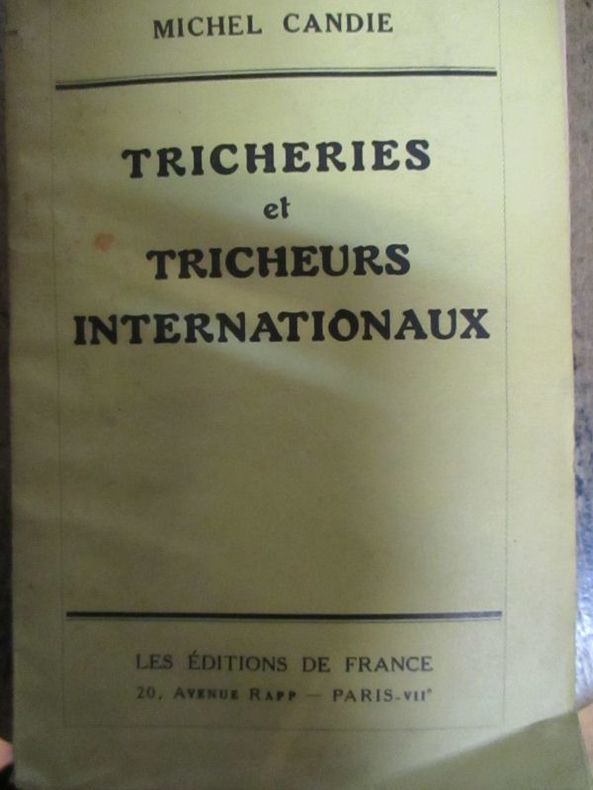
|
|